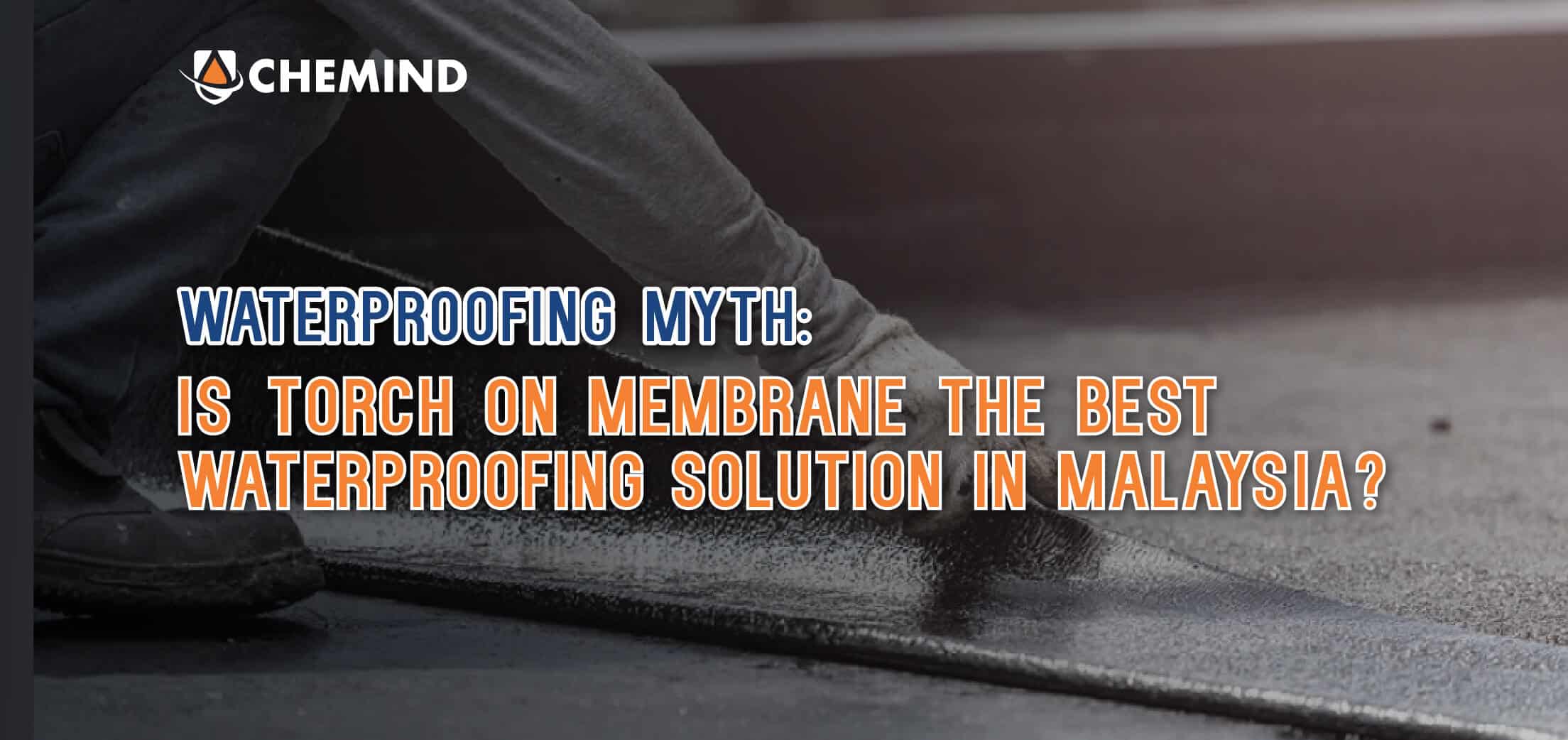Waterproofing myth: Torch-on Membrane The Best Waterproofing Solution in Malaysia?

As the construction industry in Malaysia seeks dependable waterproofing solutions, torch-on membrane technology emerges as a popular choice. But amidst its widespread adoption, the pertinent question arises: Is torch-on membrane waterproofing truly the ideal fit for Malaysia’s unique environmental conditions?
A cursory glance at search engine results for “torch-on membrane waterproofing Malaysia” reveals a plethora of contractors advocating for its efficacy. Promoted for its durability, this method relies on thick, pre-made bitumen mats, torch-applied to ensure a secure seal against water infiltration. From commercial structures to residential complexes, the allure of torch-on membrane waterproofing is evident. However, the success of its application hinges on various factors, including ambient temperature and the intricacies of the torching process.
In Malaysia’s tropical climate, characterized by sweltering temperatures and erratic weather patterns, the efficacy of torch-on membrane installation faces notable challenges. Let’s delve deeper into its viability within this context.
What is Torch-on Membrane Waterproofing?
Torch-on membrane waterproofing entails the application of specialized waterproofing material, typically modified bitumen, to create a water-resistant surface. The process involves heating the modified bitumen mat to facilitate adhesion to the substrate, typically flat concrete surfaces. However, the efficacy of torch-on membrane waterproofing in Malaysia’s climate depends on several critical factors.
Challenges and Limitations of Torch on Membrane Waterproofing
- Impact of Hot Weather on Workmanship: The scorching heat prevalent in Malaysia poses significant challenges during installation. Elevated temperatures not only affect worker comfort but also compromise the adhesive melting and bonding process. The resultant inconsistencies can lead to weakened waterproofing properties and compromised durability.
- Issues with Adhesive Melting and Bonding: Rapid installation under hot conditions often results in uneven melting of adhesives and inadequate bonding. This jeopardizes the integrity of the waterproofing system, paving the way for potential leakages over time.
- Bubbling from Trapped Moisture: Trapped moisture or air beneath the membrane’s surface can lead to bubbling, undermining its effectiveness as a barrier against water infiltration.
- Repeated Cutting and Patching: Addressing bubbling issues necessitates cutting and patching the membrane, potentially weakening its resistance to water infiltration and compromising aesthetics.
- High Expertise Requirement: Proper installation demands skilled workers proficient in the nuances of torch-on membrane application. Inadequate expertise can result in delamination and other structural issues, further emphasizing the need for trained professionals.

Other Effective Alternative Waterproofing Membrane System
It’s true that torch-on membrane can work in a lot of spaces, however, one needs to take in other factors such as area’s condition, budget, and weather that may deteriorate its effectiveness. Considering the inherent challenges of torch-on membrane waterproofing, exploring alternative solutions becomes imperative. Chemind Industries offers various waterproofing solutions that are reliable alternatives tailored to Malaysia’s climate and your needs.
Conclusion
While torch-on membrane waterproofing presents undeniable benefits, its suitability in Malaysia’s tropical climate warrants careful scrutiny. By prioritizing safety, durability, and effectiveness, alternatives like waterproofing system solution emerge as compelling options. Consult with waterproofing experts to navigate Malaysia’s unique weather challenges and make informed decisions for your construction projects.
Other popular post you might be interested
- 5 tips to waterproofing toilet and bathroom
- How to Prevent Water Damage to Your Home with an Effective Waterproofing System
- The guide to Waterproofing Membrane
- How to waterproof your bathroom and toilet with CHEMFLEX R100
- Benefits and disadvantages of waterproofing sheet system
- Water leaking in condominium apartment from upstairs. Who should repair?
- MEASAT Global RC Rooftop waterproofing works
- Benefits and Disadvantages of Liquid Waterproofing System
- Advantages and Disadvantages of Polyurethane (PU) Liquid Waterproofing
- House Waterproofing Contractor Guide for Malaysia Home – Type of Waterproofing
